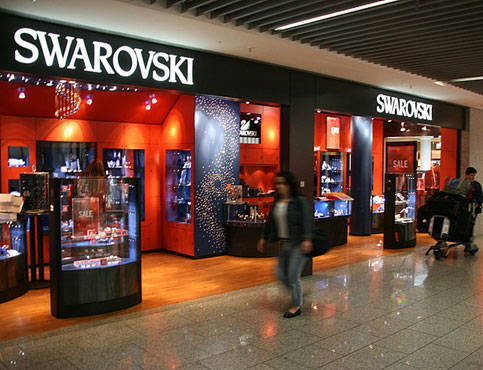Once upon a time, shopping at the airport meant grabbing a T-shirt for the kids and a mug for a friend back home — and never admitting the provenance of your tourist trinkets.
And then you’d rush back to your gate, barely stopping to nosh on a soft pretzel or use the bathroom but certainly not wasting one extra moment amid the crush of travelers bustling to catch their flights.
Not anymore.
These days, airports and the travel retail industry have joined forces to entice you to stop and shop. Airports are being made over to emulate cosmopolitan shopping malls, and companies are cashing in on the “golden hour” before travelers board their planes, offering luxury goods at airport boutiques and gourmet food to eat.
Sophisticated travelers now make choices based on which terminals have better quality food, comfortable seating and Wi-Fi accessibility. And they are arriving earlier to get through security with enough time to shop, eat and take advantage of the much-improved environment.
Airports may indeed become destinations unto themselves:
- By 2018, Singapore’s Jewel Changi Airport (SIN) will look like a steel and glass biosphere filled with plants, trees and shrubs, playgrounds, retail and leisure outlets. The centerpiece will be a 131-foot high Rain Vortex, the world’s tallest indoor waterfall.
- Qatar’s new Hamad International Airport (DOH), which opened in April 2014, features shopping at 70 stores. It boasts 30 cafes and restaurants, two hotels and a public mosque. All this with an oasis theme.
- Amsterdam’s Airport Schipohl (AMS) has a commercial center open seven days a week, offering shopping, food and beverages.
- Portland International Airport (PDX) in Oregon has welcomed local restaurants and food trucks. Plus, it offers live music from local players.
(JewelChangiAirport.com)
Since 2009, sales at airports have grown more than 12 percent per year. This growth has been fueled by an increase of tourists (especially from China), inflation and retailers’ intense focus on marketing to travelers.
As airlines in recent years have been cutting costs and amenities to stay competitive, airports themselves have felt the squeeze from regulators and budget airlines. The airports have responded by boosting “non-aeronautical” income, taking their cut from sales in shops and optimizing the management of concessions.
Although airports look more like shopping malls, they face unique challenges that are much different. For instance, travelers are under more stress. They typically have a short amount of time in which to shop and aren’t there to browse. Product sizes and quantities are important, and travelers are usually shopping to buy gifts. Airport shops work to appeal to the traveler demographic, especially since this group tends to be more affluent. These days, airports are as likely to sell luxury goods as well as sundries and souvenirs.
The more attention airport shops pay to their target customers, the better: Sales at airports are projected to grow 73 percent by 2019, according to Verdict Retail. Cosmetics and perfume are the biggest sellers, replacing tobacco and alcohol from years past.
The airport setting is also attractive to “pop-up” shops of major brands or even local small businesses, which can try out concepts to see how customers respond. For example, in 2013 JetBlue at New York’s JFK Airport hosted a farmers market featuring local produce. “Short-term leases can give vendors a chance to dip their toes into the airport arena and build awareness for street-side locations,” said Ramon Lo, editorial director of Airport Revenue News.
(CNN.com)
The potential for brand awareness seems obvious to innovative entrepreneurs. One new entrant in the footwear industry is Butterfly Twists. Its co-founder Philippe Homsy describes it this way: “All of a sudden you have 10,000 people walking through on a daily basis who represent 100 different countries, and we can reach those people that we wouldn’t on a normal basis through a store in London or in New York.”
(Airport-Business.com)
It’s good to know that airports are becoming more hospitable to travelers, offering a nice atmosphere for shopping and relaxing, if even just a little. You just have to remember while browsing that you have a plane to catch — or it might become a very expensive shopping trip!
Anjee continues to be an insatiable collector of all things retail. She’s a student of culture living next door to future shoppers, whose fleeting trends constantly change the retail landscape … driving retailers, landlords and developers crazy!

 Anjee Solanki
Anjee Solanki




 Coy Davidson
Coy Davidson
 Colliers Insights Team
Colliers Insights Team
 Beth Young
Beth Young